The history of Wat Phou Temple
Vat Phou was initially associated with the city of Shrestapura, which lay on the bank of the Mekong directly east of Linga Mountain (Lingaparvata - now called Phou Khao). By the latter part of the fifth century, the city was the capital of a kingdom that texts and inscriptions connect with the Chenla Kingdom and Champa.
The first structure on the mountain was constructed around this time. The mountain gained spiritual importance from the lingam-shaped protuberance on its summit. The mountain itself was, therefore, considered the home of Shiva, and the river as representing the ocean or the Ganges. The temple was naturally dedicated to Shiva, while the water from the spring directly behind the temple was considered sacred.
Vat Phou was a part of the Khmer Empire centred on Angkor to the southwest, at least as early as the reign of Yasovarman I in the early 10th century. Shrestapura was superseded by a new city in the Angkorian period, directly south of the temple.
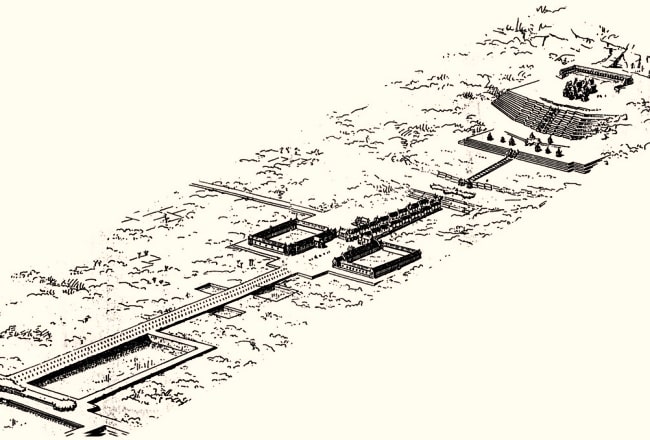
In the later period, the original buildings were replaced, re-using some of the stone blocks; the temple now seen was built primarily during the Koh Ker and Baphuon periods of the 11th century. Minor changes were made during the following two centuries, before the temple, like most in the empire, was converted to Theravada Buddhist use.
This continued after the area came under control of the Lao, and a festival is held on the site each February. Little restoration work has been done, other than the restoration of boundary posts along the path. Vat Phou was designated a World Heritage Site in 2001.
Visiting Wat Phou Temple
That said, Wat Phou temple is divided into six terraces on three levels joined by a frangipani-bordered stairway ascending the mountain to the main shrine at the top.
Lower Level
The electric cart takes you past the great baray (ceremonial pond; nŏrng sá in Lao) and delivers you to the large sandstone base of the ancient main entrance to Wat Phu. Here begins a causeway-style ceremonial promenade lined by stone lotus buds and flanked by two much smaller baray that still fill with water, lotus flowers and the odd buffalo during the wet season.
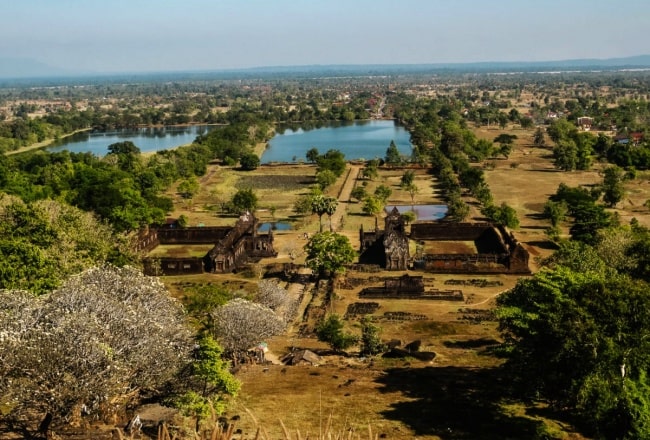
Middle Level
Wat Phou's middle section features two exquisitely carved quadrangular pavilions built of sandstone and laterite that are believed to date from the mid-10th or early 11th century. The buildings consist of four galleries and a central open courtyard. Wat Phu was converted into a Buddhist site in later centuries but much of the original Hindu sculpture remains in the lintels, which feature various forms of Vishnu and Shiva.
A good example is the eastern pediment of the north pavilion, which is a relief of Shiva and Parvati sitting on Nandi, Shiva's bull mount.
Next to the southern pavilion stands the much smaller Nandi Hall (dedicated to Shiva's mount). It was from here that an ancient royal road once led over 200km to Angkor Wat in Cambodia. In front is a smaller version of the initial causeway, this one flanked by two collapsed galleries, leading to a pair of steep staircases.
At the base of a second stairway is an impressive and now very holy dvarapala (sentinel figure) standing ramrod straight with sword held at the ready. Most Thai and Lao visitors make an offering to his spirit before continuing up the mountain. If you step down off the walkway and onto the grassy area just north of here you'll come to the remains of a yoni pedestal, the cosmic vagina-womb symbol associated with Shaivism, and two unusually large, headless and armless dvarapala statues half-buried in the grass. These are the largest dvarapala found anywhere in the former Angkorian kingdom.
After the dvarapala a rough sandstone path ascends quickly to another steep stairway, atop which is a small terrace holding six ruined brick shrines – only one retains some of its original form. From here two final staircases, the second marked by crouching guardians also sans heads and arms, take you to the top, passing through the large terraces you saw clearly from the bottom of the mountain.
Shade is provided along much of this entire middle-level route from dork jąmpąh (plumeria or frangipani), the Lao national tree.
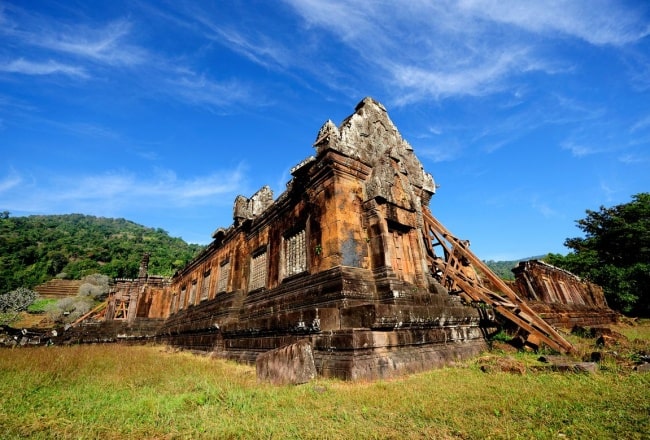
Upper Level
On the uppermost level of Wat Phu is the sanctuary itself. It has many carvings, notably two guardians and two apsara (celestial dancers), and it once enclosed a Shiva lingam that was bathed, via a system of sandstone pipes, with waters from the sacred spring that still flows behind the complex. The sanctuary now contains a set of very old, distinctive Buddha images on an altar. The brick rear section, which might have been built in the 9th century, is a cella (cell), where the holy lingam was kept.
Sculpted into a large boulder behind the sanctuary is a Khmer-style Trimurti, the Hindu holy trinity of Shiva, Vishnu and Brahma. Further back, beyond some terracing to the south of the Trimurti, is the cave from which the holy spring flowed into the sanctuary. Up a rough path to the north of the Trimurti, a Buddha footprint and an elephant are carved into a rock wall.
Just north of the Shiva lingam sanctuary, amid a mess of rocks and rubble, look around for two unique stone carvings known as the elephant stone and the crocodile stone. Crocodiles were semi-divine figures in Khmer culture, but despite much speculation that the stone was used for human sacrifices, its function – if there was one – remains unknown. The crocodile is believed to date from the Angkor period, while the elephant is thought to date from the 16th century. Also look out for an interesting chunk of staircase framed by two snakes and some small caves that were probably used for meditation in ancient days.
When you've seen everything here, just sitting and soaking up the wide-angle view of the baray, the plains and the Mekong is fantastic. A small shop sells snacks and cool drinks.Wat Phou Festival photos
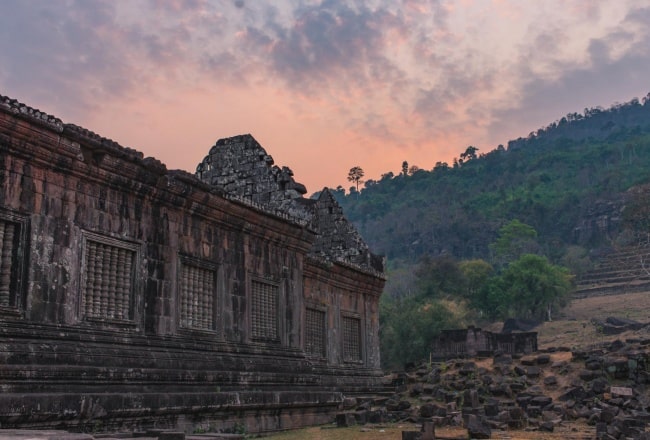
Wat Phou festival
Every year the temple is the scene of the Wat Phou festival, locally called Boun Wat Phou Champasak. The festival is held at Magha Puja day, during the full moon of the 3rd lunar month. During the 3-day festival thousands of Laos people flock to the grounds of the Wat Phou temple to pay respect to the Buddha and bring offerings. The grounds are filled with food and drink stalls, there are traditional Laos dance and musical performances, games and other entertainment.
Here is the dedicated article about Wat Phou Festival
Accommodation near Wat Phou Temple
Champasak town has a few guest houses for those looking to spend a night near the temple (it is about 10km away) and getting an early start. It is a nice little town and accommodation is much cheaper than in Pakse, so I’d definitely recommend doing this. You won’t have any trouble finding a place to stay if you just show up and look around.
If you prefer to plan ahead, here is our recommendation:
Set in Champasak, Nakorn River View has a restaurant, bar, garden, and free WiFi. Boasting family rooms, this property also provides guests with a children's playground. There is free private parking and the property offers paid airport shuttle service. At the guest house, all rooms have a patio with a river view. With a private bathroom fitted with a shower and free toiletries, rooms at Nakorn River View also have a lake view. All guest rooms will provide guests with a fridge. The accommodation offers a sun terrace.
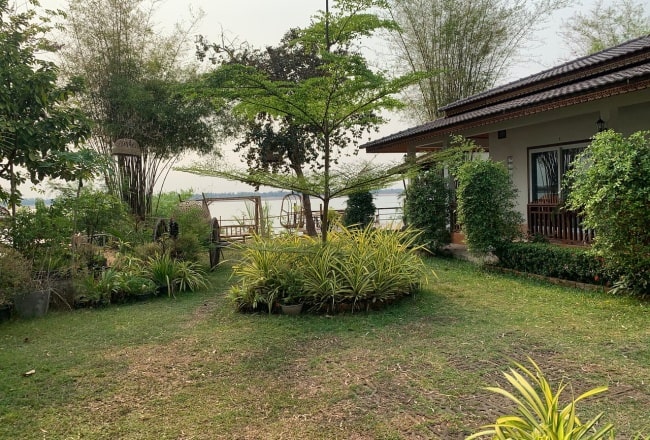
Located in the attractive, small town of Champasak, once known as Bassac, from which the hotel takes its name, the town has a unique character and comprises nine villages. The hotel has 14 rooms – 4 Suite Duplex rooms, 2 Suite Mekong Side, 4 Deluxe Garden View rooms, 2 Superior Double Rooms, and 2 Superior Twin rooms, all spacious, soothing and elegant.
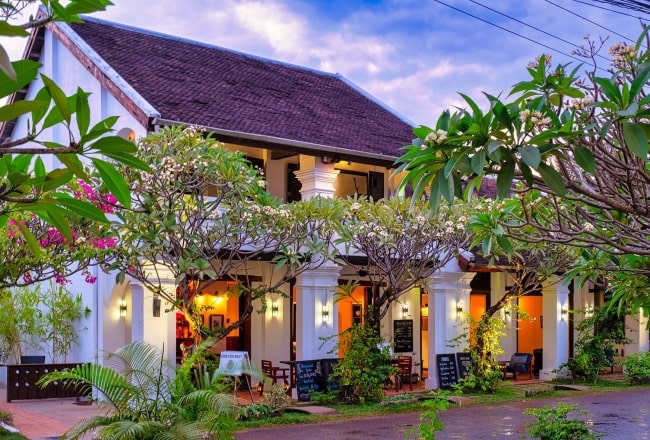
The River Resort is located on large, naturally landscaped grounds bordering on the stunningly beautiful Mekong Rivers cape. The Resort features 20 stylish, spacious guestrooms, most with panoramic River views and mountain sunset views. Each room has an indoor and outdoor shower. The Resort’s open-air Sala, overlooking the Mekong, includes a lounge and bar, restaurant featuring Western and Lao cuisine, and open rooftop terrace for dining and private parties. Guests enjoy relaxing at the Resort’s infinity swimming pool and Laotian massage pavilion.
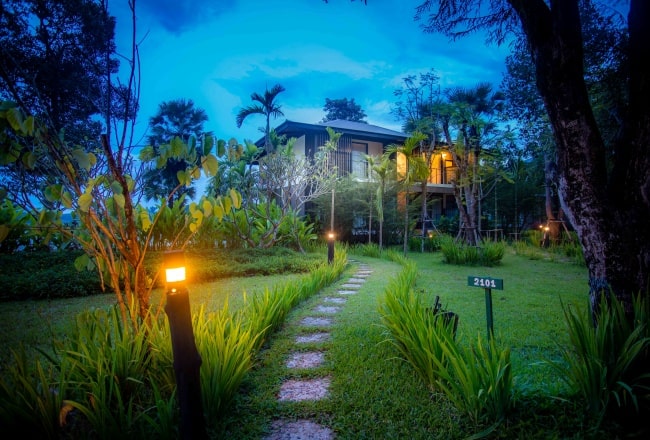
Practical Information
Best time to visit
The best time to visit Wat Phou is during the dry season from November to March, when temperatures are cooler. March to May is the hot season and the temperatures can reach 40ºC or higher, making the climb up to the temple less than enjoyable. That said, the flowers that bloom in the complex in April and May make the site especially beautiful. The wet season runs from May to October and can create problems on the roads in the area.
Regarding the day time, it is best to visit Wat Phou in the early morning time or late afternoon to avoid the heat of the day. The visiting time you spend here will be around 2-3 hours.
How to get there
The temple is located on the West bank of the Mekong river, some 45 kilometers South of Pakse. Perhaps the most comfortable way to get there is by taking a 3 day Vat Phou Mekong cruise, that also stops at several other destinations. Travel agents in Pakse offer day trips to the temple by minivan.
Getting there using public transport involves several steps. The first is taking a songthaew, which leaves from Daoruang market in Pakse following Route 13 South, towards the Champasak East Terminal at about 60,000 Kip. From there, cross the Mekong river to Champasak district at about 20,000 Kip per person. From Champasak the 8-kilometer trip to the ruins can be made by tuk tuk or rented bicycle. Alternatively, rent a motorbike in Pakse for about 80,000 Kip per day. The drive to Wat Phou takes around 1 hour.
Here is the location of Wat Phou on Google Maps for your reference:
Open every day:
8:00am - 5:00pm for the site / 8:00am - 4:30pm for the museum
From 6:00am to 8:00am and from 4:30pm to 6:00pm, an entrance ticket can be bought at the main gate. Possibility of visiting the site outside opening hours:
- Admission for site and museum: Foreigner: 50 000 LAK – Lao people: 20 000 LAK
- Entry outside normal hours: Foreigner: 55 000 LAK – Lao people: 25 000 LAK
Electric car service is included. Free admission for monks, children under 10 years old and disabled persons.
The ticket is valid for a whole day.



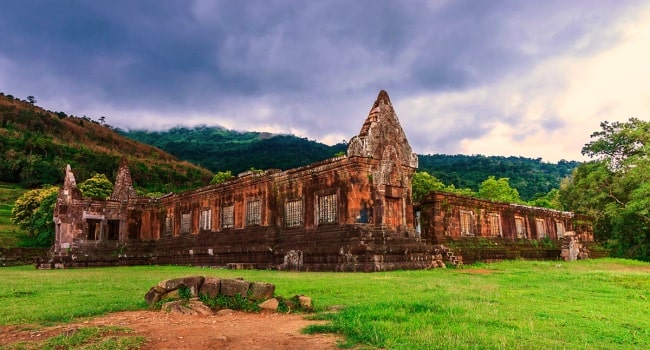

 05/01/2026
05/01/2026





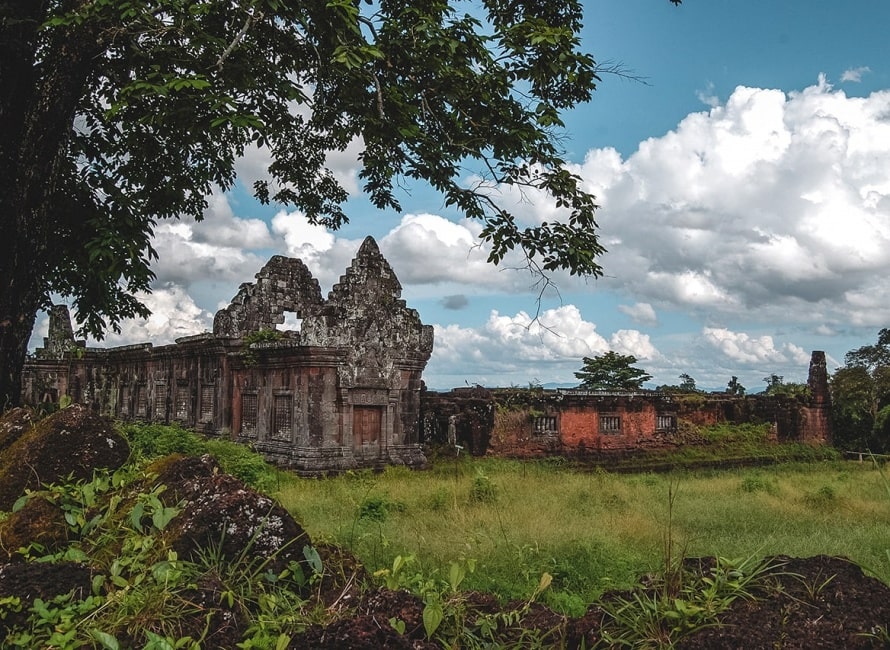
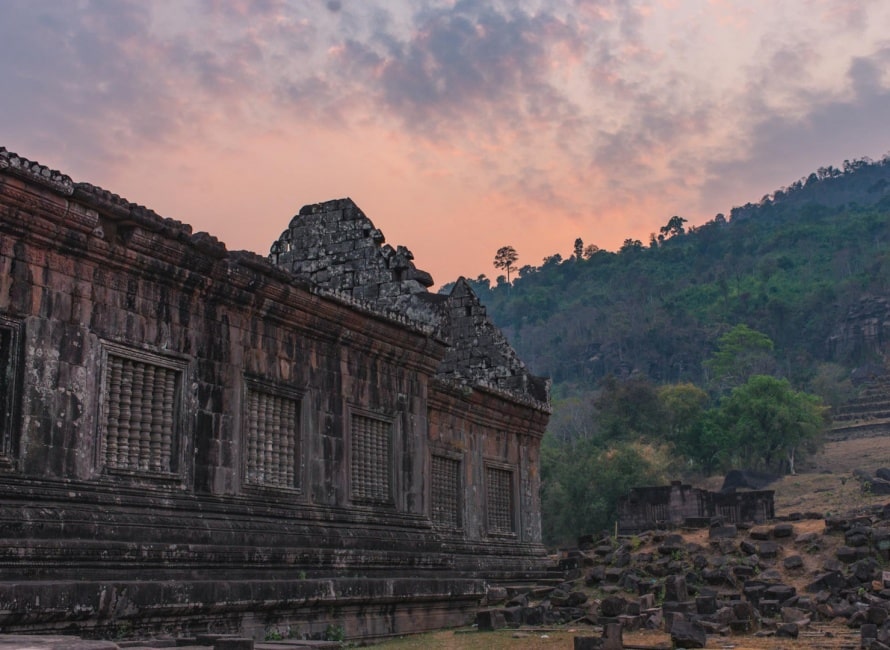
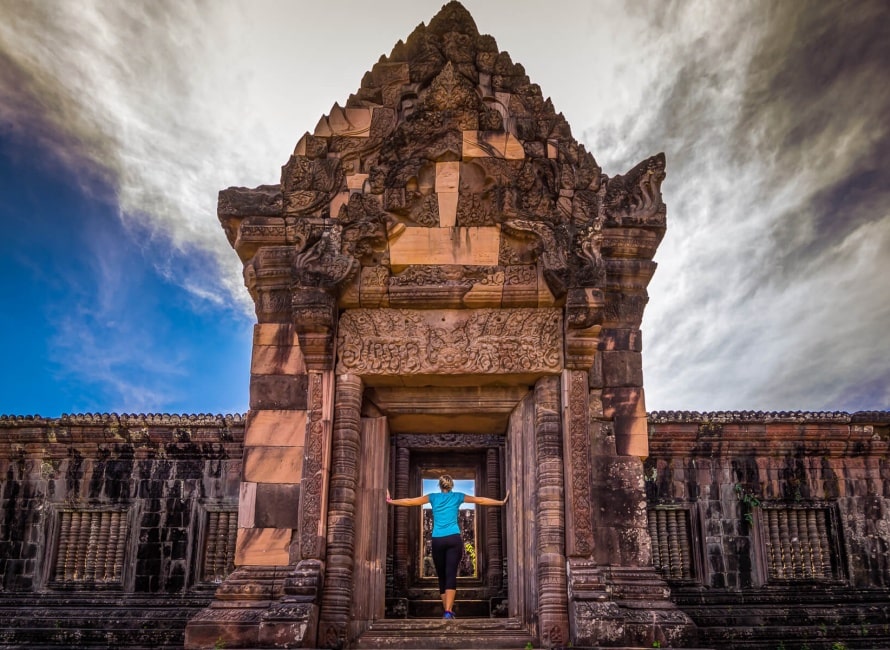
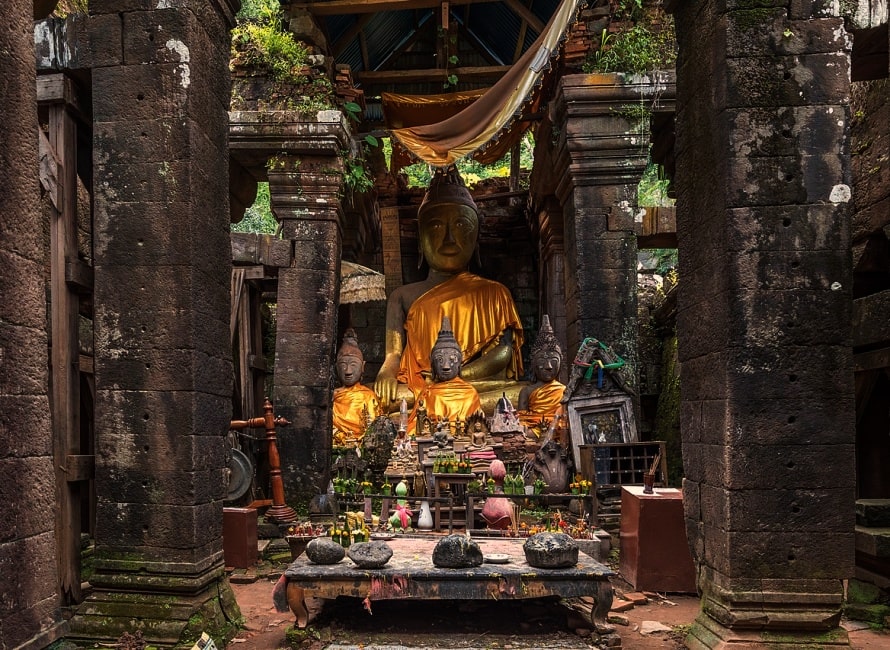
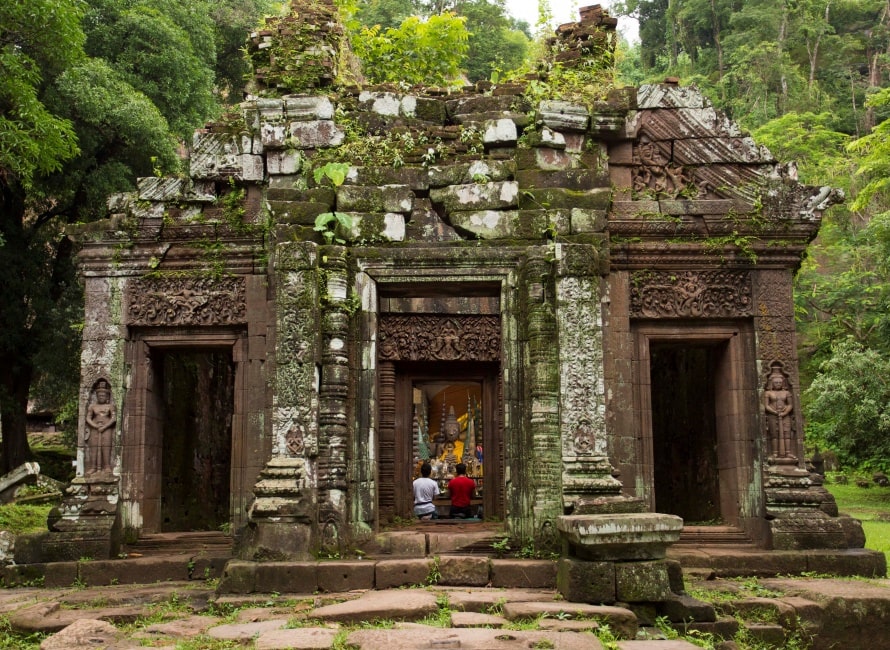
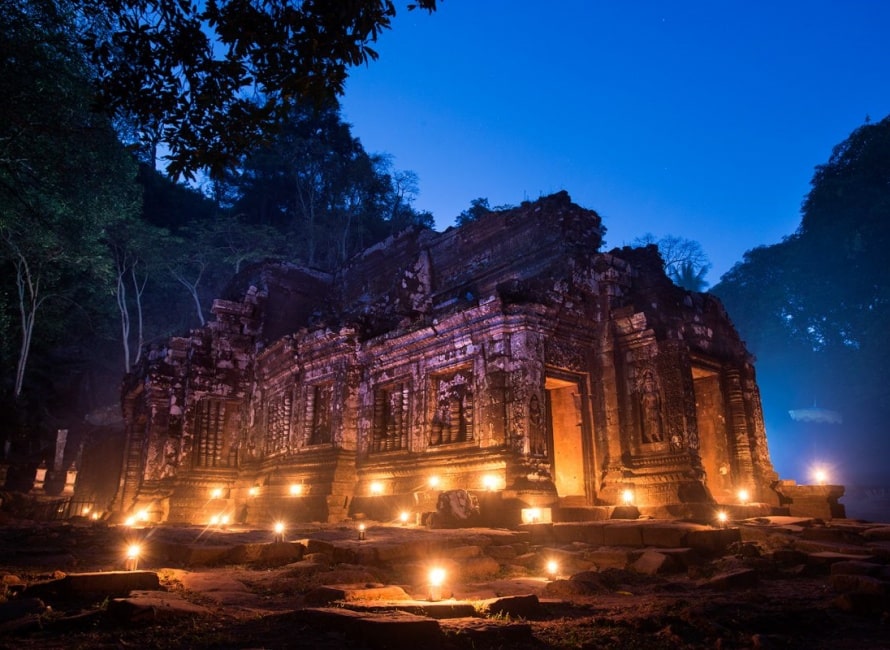
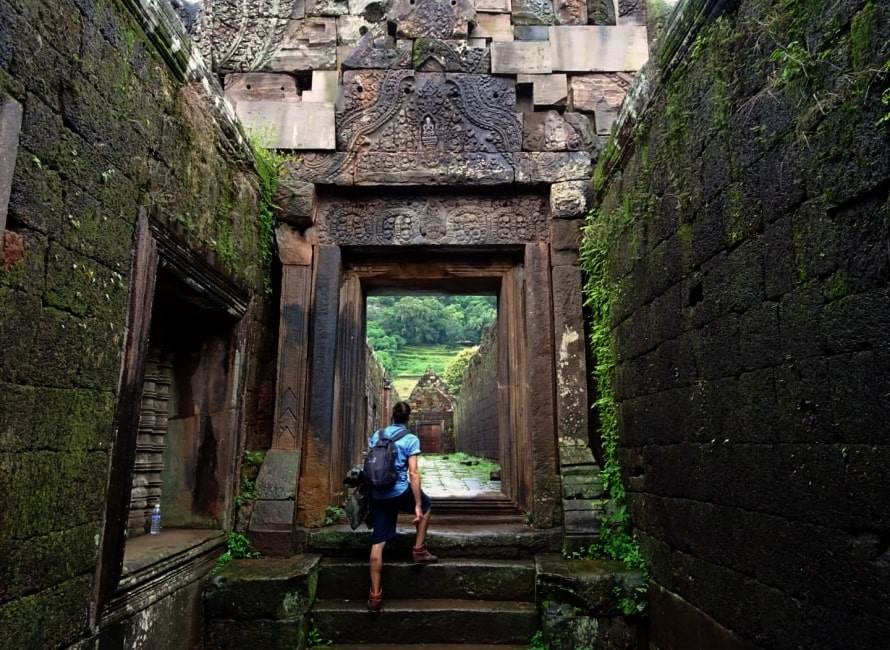
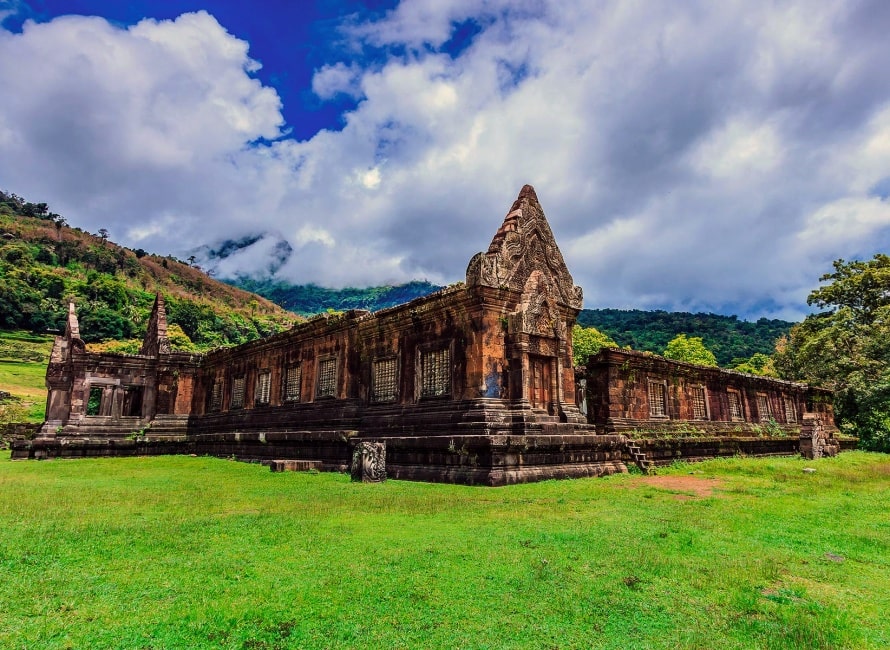



















Jolie LIEMMy name is Jolie, I am a Vietnamese girl growing up in the countryside of Hai Duong, northern Vietnam. Since a little girl, I was always dreaming of exploring the far-away lands, the unseen beauty spots of the world. My dream has been growing bigger and bigger day after day, and I do not miss a chance to make it real. After graduating from the univesity of language in Hanoi, I started the exploration with a travel agency and learning more about travel, especially responsible travel. I love experiencing the different cultures of the different lands and sharing my dream with the whole world. Hope that you love it too!